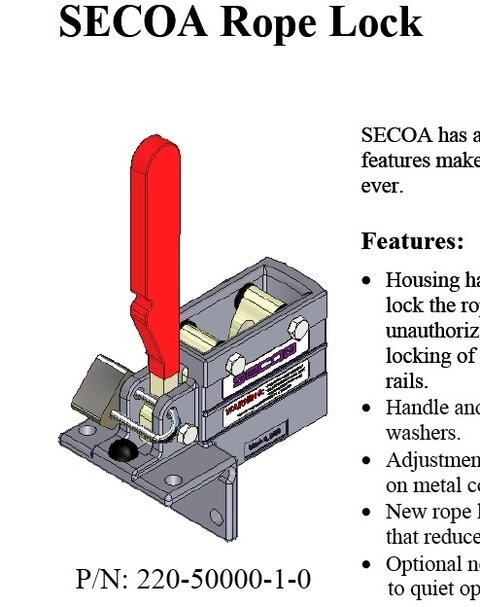TheGuruat12
Member
We want a locking system on our flyrail, one that prevents orchestra students from moving it (which I have caught them doing before). They don't have any idea how dangerous it can be because they see us use it and it looks simple, so they figure they'll have some fun.
Our VP of facilities and operations has given us the go ahead to build a lock onto it, so I was wondering if any of you had advice on the best way to do it.
This is basically our system, pretty common type, and the goal would be to prevent the rope locks from being lowered.
File:SWHS locking rail.jpg - Wikipedia, the free encyclopedia
My idea was to have a bar, welded to a hinge on the flat part of the rail, stick up at a 60 degree or so angle, with a flat piece of steel vertically at the end. There would be a hole in this piece of steel. There would be several of these down the length of the rail. When locked, there would be three long square steel tubes put in between them, padlocked through the hole at each arm. The hinges would come into play when it was unlocked. Without the crosspieces holding the arms up by bracing against the rope locks, the hinges would be free to open towards the wall behind the rail, and thus the arms would swing backwards over the rail and hang, out of the way. That way, nobody kills themselves on protruding pieces of metal.
Thoughts?
Our VP of facilities and operations has given us the go ahead to build a lock onto it, so I was wondering if any of you had advice on the best way to do it.
This is basically our system, pretty common type, and the goal would be to prevent the rope locks from being lowered.
File:SWHS locking rail.jpg - Wikipedia, the free encyclopedia
My idea was to have a bar, welded to a hinge on the flat part of the rail, stick up at a 60 degree or so angle, with a flat piece of steel vertically at the end. There would be a hole in this piece of steel. There would be several of these down the length of the rail. When locked, there would be three long square steel tubes put in between them, padlocked through the hole at each arm. The hinges would come into play when it was unlocked. Without the crosspieces holding the arms up by bracing against the rope locks, the hinges would be free to open towards the wall behind the rail, and thus the arms would swing backwards over the rail and hang, out of the way. That way, nobody kills themselves on protruding pieces of metal.
Thoughts?
Last edited:



